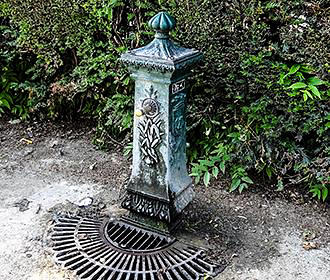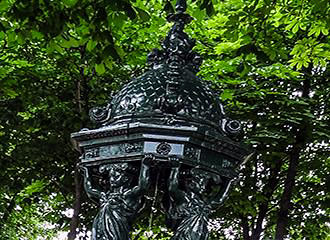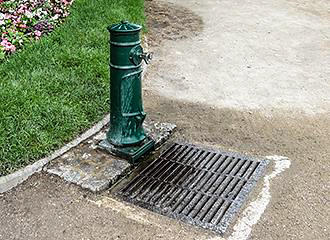Paris Wallace Fountains history and Richard Wallace
Wallace fountains are drinking water fountains in Paris that can be found dotted all over the city and are named after Richard Wallace who designed and financed their construction back in the 1800s, yet are still used today.
The preceding years before Wallace Fountains
Paris went through some very difficult times during the Franco-Prussian War and the resulting Paris Commune after this, which meant the city was badly damaged and people suffered greatly.
However, after these events, the city of Paris was starting to be transformed once more with new buildings being constructed like the Palais Garnier, which is the elegant and fabulous opera house in Paris.
But the wealthy bourgeoisie were starting to think of humanitarian issues and doing things for the greater good, where they financed many good deeds to uphold or reinforce their image and one of these philanthropists, as they are known, was Richard Wallace.
And even during the siege of Paris, Richard Wallace, who had inherited an immense fortune from his father, the 4th Marquis of Hertford, remained in Paris and he provided support for the wounded along with distributing supplies.
The water problems after the conflicts
Because water was in shorter supply, the price of water had started to rise even during the conflict, and because many aqueducts had been destroyed the price of water went up considerably more, even after the Franco-Prussian war and the Paris Commune.
This was a major problem for the poor, and the temptation to turn to alcohol was even greater, as it was actually cheaper than water, and it was considered a moral duty for people to help keep the poor from falling into this deadly trap.
So the idea of Richard Wallace, was to provide the poor and needy with drinking water throughout the city of Paris, yet he wanted them to also look nice, as well as be of benefit to the people.
Start of the Paris Wallace Fountains history
It was Richard Wallace who designed the two main types of fountains himself, which was a large model and an applied model, which is what would be fixed to a wall, such as on a hospital. And he wanted the designs to adhere to strict guidelines such as the height where they could be seen, yet not too large to become an eyesore, and also pleasing to the eye, as well as be practical and in logical places.
The colour chosen was green, which was determined by the city of Paris, as this was to blend in with the scenery and the city also chose the locations where they would be placed.
The material chosen was cast iron because it was less expensive than some other materials and was robust, yet easy to mould into shape in a short period of time, as Richard Wallace wanted the project completed as quickly as possible.
He then called upon the sculptor Charles-Auguste Lebourg to improve upon the drawings for the large model of fountain, and he came up with the idea of creating four carytids, or models of ladies on the Paris Wallace Fountains, that would each differ slightly and were to represent kindness, simplicity, charity and sobriety.
And so, this design was chosen and put into production, which he mainly financed himself with a little input from the city. And his devotion to Paris meant that numerous drinking water fountains were positioned all over the city and these ended up with the name of the Wallace Fountains after Richard Wallace, which have also found their way to other places and cities in France and beyond.


